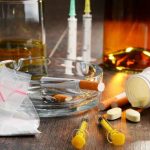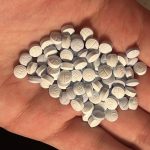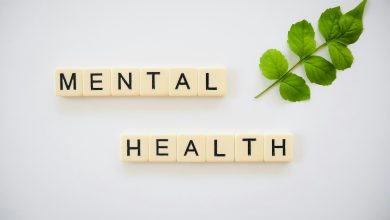The Top 12 Most Dangerous Drugs in the World: A Closer Look

In a world grappling with the myriad complexities of substance use and abuse, it’s essential to shed light on the top 12 most dangerous drugs. While some substances have therapeutic purposes, others pose severe threats to individuals and communities.
This article delves into these notorious substances, examining their effects, risks, and the societal impact they carry.
1. Heroin
Heroin, a derivative of morphine, stands out as one of the most perilous and addictive drugs globally. It induces an intense, euphoric high, but this short-lived pleasure often leads to rapid physical and psychological dependence. The consequences of heroin abuse are multifaceted, spanning from fatal overdoses to infections and long-term health complications.
Methamphetamine, colloquially known as “meth,” is a powerful stimulant capable of inflicting severe physical and psychological harm. The immediate, intense high it provides frequently leads to addiction, wreaking havoc on the lives of those ensnared by it, as well as their families.
3. Cocaine
Derived from the coca plant, cocaine is a potent stimulant with a dark history of abuse. This infamous substance takes its toll on the heart, brain, and overall health of its users. Cocaine is notorious for its addictive nature, leading to cardiovascular issues, mental health problems, and a devastating impact on personal relationships.
4. Fentanyl
Fentanyl, a synthetic opioid, is a deadly foe, being up to 100 times more potent than morphine. Its extreme strength has contributed to a significant portion of opioid-related fatalities in recent years, as the margin between therapeutic dose and lethal overdose is razor-thin.
5. Synthetic Cannabinoids (Spice/K2)
Marketed under names like “Spice” or “K2,” synthetic cannabinoids endeavor to mimic the effects of marijuana. However, these synthetic drugs come with unpredictable and often perilous side effects, leading to numerous cases of hospitalization and, tragically, even death.
6. Bath Salts
Bath salts are synthetic drugs containing stimulant compounds, primarily cathinones. Their use can induce severe hallucinations, paranoia, and violent behavior, making them a substantial public health concern.
7. LSD
Lysergic acid diethylamide (LSD), often known as “acid,” is a hallucinogenic drug renowned for its mind-altering effects. While it may not pose the same immediate physical dangers as some other substances, its potential for causing severe psychological disturbances and unpredictable behavior cannot be understated.
Ecstasy, scientifically termed MDMA, is a popular party drug known for its potential to induce a heightened sense of euphoria and connectedness. However, its use often leads to severe dehydration, hyperthermia, and serotonin syndrome. Additionally, the variability in the drug’s purity and the inclusion of unknown ingredients heighten the risks associated with its consumption.
9. Crack Cocaine
Crack cocaine is an extremely potent form of cocaine, commonly smoked rather than snorted. Its use is associated with an intense addiction, frequent aggressive behavior, and a host of health problems.
10. Ketamine
Ketamine, a dissociative anesthetic, can plunge users into hallucinatory states and a feeling of detachment from their bodies. While it has legitimate medical applications, it has also gained popularity as a recreational drug, raising concerns regarding its potential for abuse.
11. Methadone
Methadone, while used in the treatment of opioid addiction, can also be a perilous substance when misused. This synthetic opioid acts as a long-acting pain reliever and, when abused, can lead to respiratory depression and overdose. Its potential for abuse, coupled with the risk of diversion from legitimate medical use, makes it a dangerous drug.
12. Synthetic Cathinones (Flakka)
Synthetic cathinones, often referred to as “Flakka,” belong to the same family of substances as bath salts. These synthetic stimulants can cause extreme agitation, paranoia, hallucinations, and violent behavior. The unpredictability of their effects and the dangers they pose to users and those around them have earned them a place on this list of the world’s most dangerous drugs.
The Impact of Dangerous Drugs
The use and abuse of dangerous drugs have far-reaching consequences that extend their pernicious reach into the lives of individuals, families, and society as a whole. The substances, listed above have the potential to cause devastating effects on both the users and the communities they inhabit. In this section, we will delve deeper into the impact of these dangerous drugs on various aspects of society.
Individuals and Families:
1. Addiction: The most immediate and evident impact of these dangerous drugs is addiction. Users often find themselves trapped in a cycle of dependence, where they require more of the substance to achieve the same effect. Addiction disrupts their lives, making it difficult to maintain employment, relationships, and overall well-being.
2. Physical and Mental Health Issues: Dangerous drugs can lead to a range of physical and mental health issues. These include cardiovascular problems, respiratory complications, liver disease, depression, anxiety, and psychosis. The toll on an individual’s health is substantial, with long-term use often leading to chronic conditions.
3. Untimely Deaths: Perhaps the most tragic consequence of drug abuse is the untimely deaths it can cause. Overdoses are all too common, particularly with substances like heroin and synthetic opioids like fentanyl. The loss of life has a profound impact on the families and communities left behind, contributing to a public health crisis.
4. Family Disruption: The impact of dangerous drug use extends to families as well. Relationships can deteriorate, and families may suffer from emotional and financial stress. Children in these households are often the most vulnerable, facing a higher risk of neglect and abuse.
Societal Impact:
1. Economic Burden: The economic burden of drug abuse is staggering. Healthcare costs associated with addiction treatment, emergency room visits due to overdoses, and the treatment of health issues stemming from drug use are substantial. Additionally, the costs of law enforcement efforts to combat drug-related crime and lost productivity in the workplace due to drug-related problems contribute to a significant financial burden on society.
2. Crime and Criminal Justice System: Dangerous drugs often lead to criminal activities, as users may resort to theft, violence, or other crimes to sustain their addiction. This places additional pressure on the criminal justice system, leading to higher incarceration rates and overcrowded prisons.
Preventing Drug Abuse
Mitigating drug abuse and addressing the challenges posed by these hazardous substances are multifaceted endeavors. Recognizing the scale of the problem, society has implemented various strategies and initiatives to combat drug misuse. These approaches encompass education, prevention, treatment, and harm reduction strategies.
1. Public Health Initiatives: Public health initiatives aim to raise awareness about the dangers of drug abuse and provide resources for prevention and treatment. These programs are crucial in educating the public, particularly young people, about the risks associated with drug use. They also focus on reducing the stigma of addiction, making it easier for individuals to seek help.
2. Education: Education is a powerful tool in preventing drug abuse. Schools and communities conduct educational programs that equip individuals with the knowledge to make informed decisions about drug use. By teaching young people about the risks and consequences of drug abuse, we can reduce the likelihood of them experimenting with dangerous substances.
3. Treatment and Rehabilitation: Treatment and rehabilitation programs play a vital role in helping individuals recover from addiction. Access to these services is essential for those who wish to break free from the cycle of drug dependence. Treatment options range from outpatient counseling to inpatient detoxification and long-term residential programs.
4. Harm Reduction: Harm reduction strategies are designed to minimize the negative consequences of drug use, even when individuals continue to use drugs. These strategies include the distribution of clean needles to reduce the spread of infectious diseases among injection drug users and providing access to naloxone to reverse opioid overdoses. Harm reduction programs also promote safe consumption spaces to reduce the risks associated with drug use.
5. Policy and Regulation: Governments worldwide implement policies and regulations to control the availability and distribution of dangerous drugs. This includes regulating prescription opioids, restricting the sale of over-the-counter drugs used in the production of methamphetamine, and prosecuting those involved in the trafficking and distribution of illicit drugs.
6. Community Support: Communities play a crucial role in supporting individuals in recovery and creating a stigma-free environment for those seeking help. Support groups and community resources are instrumental in helping individuals maintain their recovery and rebuild their lives.
Conclusion
The list of the top 12 most dangerous drugs in the world represents a critical resource for understanding and addressing the complex issue of substance abuse. These substances pose significant threats to individual well-being and public health, with far-reaching consequences that affect not only the users but also their families and communities. Combating drug abuse requires a multifaceted approach, including education, prevention, treatment, and harm reduction strategies. By responsibly addressing these challenges, we can work towards a safer and healthier world for all, providing support and resources for those affected by addiction and minimizing the harm caused by these dangerous drugs.





